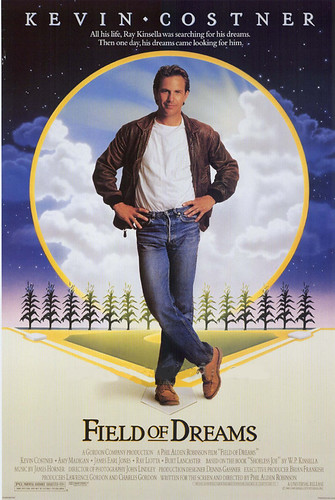more about cultural assets and revitalization

Today's Post has this letter to the editor by Martin W.G. King of Arlington, "Spread the Cultural Wealth:"
The proponents of a bigger Mall ["Group Envisions Additions With More Major Museums to Help Keep Area Vibrant," Metro, Aug. 7] miss the point. New museums and memorials should be spread around Washington to make them more accessible to residents while bringing economic benefits to sometimes blighted neighborhoods. The development planned near the site of the new baseball stadium shows the rejuvenation that can be sparked by a single new attraction.
Look at the John F. Kennedy Center for the Performing Arts to see a colossal planning mistake. The marble shoebox sits not far from the distant edge of the Mall, isolated from the city not just by the price of admission to performances but by a tangle of highways.
It would be a pity to expand the Mall to accommodate more museums and memorials when city neighborhoods need the economic development tourism can provide and when city residents could have institutions of history, learning and entertainment more accessible to their neighborhoods.
I think Mr. King's example of the Kennedy Center is a better explanation of why siting "attractions" in atypical areas is fraught with peril. Kennedy Center isn't really on the Mall. It's away from natural gathering places. It's disconnected from the transit infrastructure. There aren't other things to do around there. It's a vacuum.
I have written about this issue extensively. It's about building and/or improving destinations. It's about asset-based development versus the construction of urban renewal-like big projects. It's about what Kathy Smith, in Capital Assets, calls "readiness." Again, it comes back to what Jane Jacobs wrote about in terms of the importance of mixed primary uses and what we now call "time-shifting."
In her book she discusses Pittsburgh and their creation of a cultural arts district far from downtown. This new district required the creation of a dedicated parking infrastructure only to be used at night, a few times/week. Meanwhile downtown parking lots and structures centered around the daytime office population remained empty at night.
A more recent example is Cleveland's Rock and Roll Hall of Fame, which has a nice lakefront location, but it is far far away from other centers of activity such as Tower City, the Warehouse or Flats districts, etc. This use could have just as easily been located in the still empty 1 million square foot May Department Store, which is located on Euclid Avenue, and is less than one block away from Tower City, transit connections, etc. Located there, it could have had a multiplicative effect. On its own, disconnected and placeless, it doesn't do much for the surrounding area (although it's a fun place to visit).
Great destinations for residents can become great destinations for other people. "Fielding a Dream," an article in the Tampa Tribune about children's sports-related tourism makes the same point. "Sports industry officials caution communities not to focus too much on tourism. ``Usually these complexes are built first and foremost to satisfy local unmet needs,'' said Don Schumacher, executive director of the National Association of Sports Commissions in Cincinnati. ``The rule in the business is that to be successful, it needs to be used by regional and local users first.''
There is also my writing about the impact of office development in neighborhoods, such as in the entry "More office buildings won't 'save' Anacostia" which makes the same point.
As Dani Maier, a cultural geographer, wrote in a letter to the editor of the New York Times in response to a recent column by David Brooks, "Place matters, resources matter, culture matters."
Buildings aren't necessarily good place-makers in and of themselves.
Placemaking and destination development is a lot more nuanced than the "if you build it they will come" philosophy popularized by economic development officials in government and movies.
The International Spy Museum is wildly successful. The City Museum of DC is currently closed...
Etc.



0 Comments:
Post a Comment
<< Home